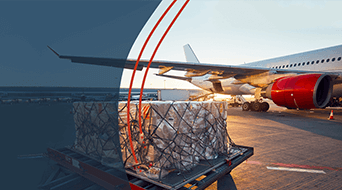Freight Shipping To Canada
Less-than-truckload (LTL) shipping from US to Canada or shipping from Canada to the US, a subset of international freight shipping, requires a few extra steps as compared to domestic shipping within the lower 48 states. In this blog we'll discuss the process and paperwork required for cross-border shipping success.
How To Set Up a Canadian LTL Shipment
Setting up your Canadian shipment requires the following:
- Carefully Pack Your Shipment: LTL freight is handled multiple times as it moves the extended distance from the United States to the Canadian border, so properly packaging your shipment is crucial. Check out these tips on the best way to prepare your freight shipment.
- Complete the Paperwork for Freight Shipping to Canada: This includes a Bill of Lading (BOL) that contains the relevant details of your shipment; a customs invoice that lists both what you're shipping and its value (in dollars); a certificate of origin (you may be able to use the commercial invoice as valid proof when shipping from Canada to the US), and other documents based on the specific shipment information.
- Select a Customs Broker: A customs broker is required to clear your shipment to cross the border, and you cannot do this without one. They are knowledgeable about duties, required forms, taxes, and fees. To avoid unnecessary hassles at any point, it is best to consult the customs broker before sending your shipment.
Using a Canadian Customs Broker
When a customs official looks at your items, they're checking the Canadian Commercial Invoice (CCI) for the customs broker. This company or individual will be responsible for electronically navigating customs freight in Canada. They're trained to know the protocols and navigate the system regardless of what you're shipping.
When you fill out a CCI, one copy is usually attached to the BOL, and another is attached directly to the freight. The customs broker checks information to ensure it's both complete and accurate.
As a shipper, it's critical to have effective communication with your customs broker during the shipment. If there are delays, it's usually because the paperwork was incorrect or the carrier and the broker had some sort of misunderstanding. Once your shipment is on its way, it's the broker who coordinates all customs duties, including the Importer of Record and taxes. They'll send the paperwork to Canada Broker Services Agency (CBSA), so it can clear the border.
Whether inspecting your BOL or commercial invoice, the right customs broker will standardize the process. This can ultimately speed things up, lower compliance risk, and ensure accuracy from one destination to another. An experienced professional in LTL shipments will have already worked out many of the kinks, so they can provide the best-in-class service to their clients.
Customs documentation is confusing, get more pro tips to sail through customs!
Estimated Transit Delays and Additional Charges
Whether you're shipping freight from Canada to the US or shipping from the US to Canada, LTL freight can be delayed at customs for an extra day or two (but you can learn how to manage customs like a pro with our help). It's important to give yourself a cushion. You will only face additional fees if there's incorrect information on your paperwork. In that case, CSBA may charge you to store items until everything can be worked out.
Contact Unishippers for a Quote on LTL Shipping to Canada Today
Unishippers is here to help you coordinate your freight if you're looking to ship to Canada. As a third-party logistics company with over 30 years of experience, we make it easy to ship from Canada to the US and back again.


